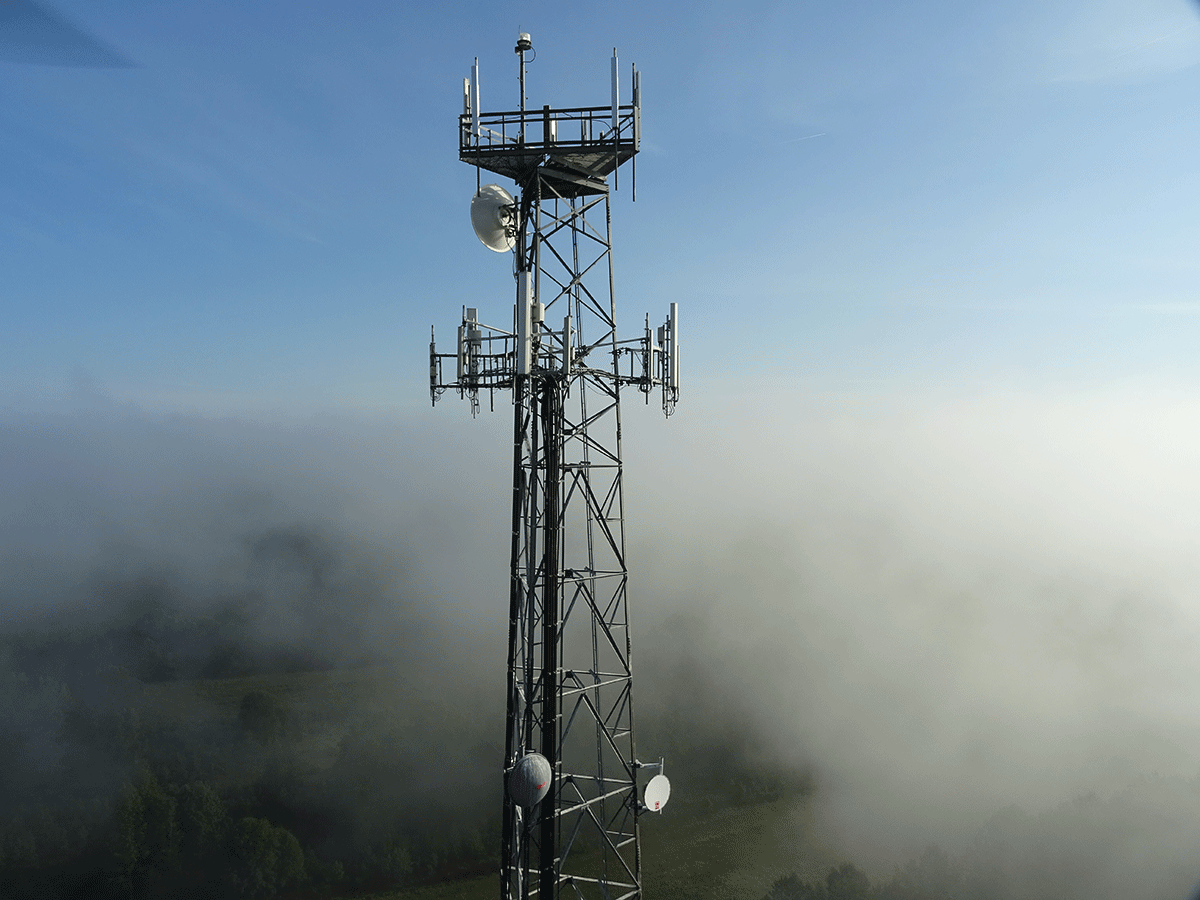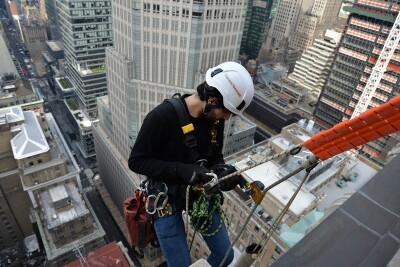Figuring out how to efficiently, effectively and safely utilize UAVs in the utility industry is an issue than many people are struggling with. Fortunately, the executive team at Talon Aerolytics has been able to leverage the capabilities of drones to create a business and impact this entire industry. They shared their insights and experiences around how they’ve been able to do just that.
Click here to read Part 1 of this article where they discuss creating a complete drone solution as well as their approach around implementation, or continue reading below. Tangible ResultsThere are plenty of experts and operators making claims about all the wonderful things drones can and will be able to do. Because of that, there was reason to be skeptical of Talon’s claim around being able to reduce the total inspection time of a single tower from months to days. How exactly was that possible?For Dunnigan and his team, the answer to that question comes down to them being able to operate in a more effective, efficient and safer manner when compared to alternative or traditional approaches and services. Those differences are seen and recognized in tangible ways, which allows them to both save time and avoid unnecessary work.“We dispatch a ground-based team that has the necessary equipment at their disposal to capture all the data,” Dunnigan explained. “There is no redo. We don’t have to go back to the office for a piece of equipment that’s missing for the inspections we do. Everything is housed in a professional fleet vehicle with a variety of commercial drones, and we’re more effective because of that drone fleet. We’re using commercial drones that can capture incredibly intricate detail, and we have a process that we’ve perfected and can repeat over and over. The only thing we have to do between each flight is change a battery, all of which makes us more efficient. Lastly, because we’re focused on safety and keeping people on the ground, we don’t have to take the cautious climb to the top of a tower that might take upwards of 40 or 45 minutes. That saves us time in countless ways, all of which can add up quickly.”It’s easy to see how all of these elements feed back into one another. By avoiding a 45-minute climb, operators can accomplish that much more in a given day. By using tools that gather more and better info, there is rarely if ever a need to go back out. By continuing to utilize the same process that allows operators to efficiently do what they need to do, less overall time needs to be spent in the field.It’s not simply about the tools or approach when it comes to seeing these kinds of improvements though. Capturing and processing live data allows them to make all of that info available to the client by the next day, when in the past access to that data would have taken weeks or even months. This information can then impact decisions that are being actively made, which can help avoid unexpected delays.By being able to work more efficiently, effectively and safely, Talon gets through a project that much faster. It’s not one thing Talon is doing that allows them to see these sorts of reductions though. Their approach is designed to impact multiple areas and elements for the benefit of the entire project. Data and DeliverablesTalon’s focus on data gives them a competitive advantage that few other service providers are able to match. This advantage isn’t because they’re using proprietary drone technology or because they’ve created a process they’re looking to keep secret. Instead, their success comes down to their approach around what to do with that data once it’s been captured. It’s a concept of “actionable data” that proves they’re thinking this topic all the way through.“Our system creates ‘actionable data’,” said Eric Hare, Chief Operating Officer at Talon. “We’re not just collecting photographs and video, which is common in the drone space. We take all of that data and put it into an editing process. That turns it into actionable data on the other side in terms of the metrics customers want and need. They can then pull up these photos, videos and other pieces of info to do written or video annotations. It really allows for collaboration and interaction.”Figuring out what that “actionable data” looks like at the delivery stage is a key consideration as well. It can vary from client to client, and even from project to project. Sometimes a client might not even be sure what the most ideal form of a deliverable looks like, which is a question that Talon helps their clients discover once they provide a scope of work.These questions and details around data really come down to being able to capture and use more accurate data. Drones can attain a level of precision that has only recently been able to be achieved, and that ties into the challenges professionals are dealing with as many try to move away from traditional and legacy techniques and methodologies."Using a cloth tape to measure AGL for antennas is common practice and considered a legacy system that often misrepresents accuracy and requires a climb,” Dunnigan said. ‘Using technology such as UAVs and laser range finders to measure AGL eliminates the need for a climber to capture that important data from atop the tower from where the tape is dropped. This kind of technology creates a safer opportunity to capture the data and reduces risk by minimizing the number of tasks a climber performs when climbs are required, thus improving safety. Each task or legacy system that can be replaced or captured more precisely with technology makes the most dangerous job in America safer."Those sorts of legacy systems are still pervasive in various industries, and they present challenges when it comes to a cultural or paradigm shift that needs to take place within an industry. Stakeholders at every level need to understand what innovation can mean for them, and the people involved will have to be open minded enough to take a look at and test what’s next.Luckily, the proof is in the data. Talon is able to provide incredibly precise data, and that brings things to a head when a piece of paper says something is “32”, and their measurements say it’s “41”. Talon has what they need to prove the paper wrong, but the stakeholders need to be open to accepting this new reality.
Data and DeliverablesTalon’s focus on data gives them a competitive advantage that few other service providers are able to match. This advantage isn’t because they’re using proprietary drone technology or because they’ve created a process they’re looking to keep secret. Instead, their success comes down to their approach around what to do with that data once it’s been captured. It’s a concept of “actionable data” that proves they’re thinking this topic all the way through.“Our system creates ‘actionable data’,” said Eric Hare, Chief Operating Officer at Talon. “We’re not just collecting photographs and video, which is common in the drone space. We take all of that data and put it into an editing process. That turns it into actionable data on the other side in terms of the metrics customers want and need. They can then pull up these photos, videos and other pieces of info to do written or video annotations. It really allows for collaboration and interaction.”Figuring out what that “actionable data” looks like at the delivery stage is a key consideration as well. It can vary from client to client, and even from project to project. Sometimes a client might not even be sure what the most ideal form of a deliverable looks like, which is a question that Talon helps their clients discover once they provide a scope of work.These questions and details around data really come down to being able to capture and use more accurate data. Drones can attain a level of precision that has only recently been able to be achieved, and that ties into the challenges professionals are dealing with as many try to move away from traditional and legacy techniques and methodologies."Using a cloth tape to measure AGL for antennas is common practice and considered a legacy system that often misrepresents accuracy and requires a climb,” Dunnigan said. ‘Using technology such as UAVs and laser range finders to measure AGL eliminates the need for a climber to capture that important data from atop the tower from where the tape is dropped. This kind of technology creates a safer opportunity to capture the data and reduces risk by minimizing the number of tasks a climber performs when climbs are required, thus improving safety. Each task or legacy system that can be replaced or captured more precisely with technology makes the most dangerous job in America safer."Those sorts of legacy systems are still pervasive in various industries, and they present challenges when it comes to a cultural or paradigm shift that needs to take place within an industry. Stakeholders at every level need to understand what innovation can mean for them, and the people involved will have to be open minded enough to take a look at and test what’s next.Luckily, the proof is in the data. Talon is able to provide incredibly precise data, and that brings things to a head when a piece of paper says something is “32”, and their measurements say it’s “41”. Talon has what they need to prove the paper wrong, but the stakeholders need to be open to accepting this new reality.  It’s a Mistake to WaitWith the challenges relating to logistics and regulation, many organizations are planning on waiting until things are sorted out before more fully exploring the technology. However, doing so presents an even bigger challenge than simply trying to work through issues in the current landscape.“I’d say that from a developmental and business perspective, it’s best to at a minimum explore UAV technology now,” Dunnigan mentioned. “If you don’t want to commit to it because you’re not sure of the business impact or use case for your industry, that’s fine, but educate yourself now. Do the experiments now so that if regulation changes or sways more toward what you’re looking for, you’ll be ready. There really is a lot to learn, and you don’t want to be playing catch up.”Dunnigan and his team will be the first to admit they’ve made a lot of mistakes and are still learning, but that hasn’t stopped them from trying to gather as much info from as many people and places as they can. They’re more aware than most that doing so is a challenge, because properly utilizing this technology isn’t about simply launching a drone out of a bucket truck or the back of a van. That means figuring out what you want to do with a drone isn’t going to be wasted energy, especially if you’re able to consider that in terms of the ultimate goals of an organization.That sentiment is echoed by Beason as well, who has seen many stakeholders claim they need to wait until beyond visual line of sight (BVLOS) operation is more fully defined before trying to explore the technology. In a similar way though, anyone who makes that claim will find they need to play catch up.“The utility industry as a whole is fixated on BVLOS,” Beason said. “But we have actual field cases that show this technology can save money, time and produce a better product right now. BVLOS might be great, but it’s a mistake to wait until it comes out to work through how UAVs can help an organization.”Talon has proven how much benefit is available right now, which means BVLOS considerations are an entirely separate topic. The impact to the bottom line that can be realized today is evident, but it’s not even the best reason to embrace what drones can do for an organization.“People are losing their lives right now doing these jobs,” Dunnigan concluded. “This technology could have made these companies more precise and efficient, which in turn might have meant those people didn’t need to put themselves in harm’s way. We can be saving lives right now, and that’s relevant in any industry.”The ways in which drones have allowed Talon to operate more efficiently, effectively and safer are apparent, and they’ve changed things for their customers. However, they’ve also changed things for the entire utility industry, and we’ll be seeing the impact of those changes over the next few months and years as UAV technology becomes more pervasive and powerful.
It’s a Mistake to WaitWith the challenges relating to logistics and regulation, many organizations are planning on waiting until things are sorted out before more fully exploring the technology. However, doing so presents an even bigger challenge than simply trying to work through issues in the current landscape.“I’d say that from a developmental and business perspective, it’s best to at a minimum explore UAV technology now,” Dunnigan mentioned. “If you don’t want to commit to it because you’re not sure of the business impact or use case for your industry, that’s fine, but educate yourself now. Do the experiments now so that if regulation changes or sways more toward what you’re looking for, you’ll be ready. There really is a lot to learn, and you don’t want to be playing catch up.”Dunnigan and his team will be the first to admit they’ve made a lot of mistakes and are still learning, but that hasn’t stopped them from trying to gather as much info from as many people and places as they can. They’re more aware than most that doing so is a challenge, because properly utilizing this technology isn’t about simply launching a drone out of a bucket truck or the back of a van. That means figuring out what you want to do with a drone isn’t going to be wasted energy, especially if you’re able to consider that in terms of the ultimate goals of an organization.That sentiment is echoed by Beason as well, who has seen many stakeholders claim they need to wait until beyond visual line of sight (BVLOS) operation is more fully defined before trying to explore the technology. In a similar way though, anyone who makes that claim will find they need to play catch up.“The utility industry as a whole is fixated on BVLOS,” Beason said. “But we have actual field cases that show this technology can save money, time and produce a better product right now. BVLOS might be great, but it’s a mistake to wait until it comes out to work through how UAVs can help an organization.”Talon has proven how much benefit is available right now, which means BVLOS considerations are an entirely separate topic. The impact to the bottom line that can be realized today is evident, but it’s not even the best reason to embrace what drones can do for an organization.“People are losing their lives right now doing these jobs,” Dunnigan concluded. “This technology could have made these companies more precise and efficient, which in turn might have meant those people didn’t need to put themselves in harm’s way. We can be saving lives right now, and that’s relevant in any industry.”The ways in which drones have allowed Talon to operate more efficiently, effectively and safer are apparent, and they’ve changed things for their customers. However, they’ve also changed things for the entire utility industry, and we’ll be seeing the impact of those changes over the next few months and years as UAV technology becomes more pervasive and powerful.
















Comments